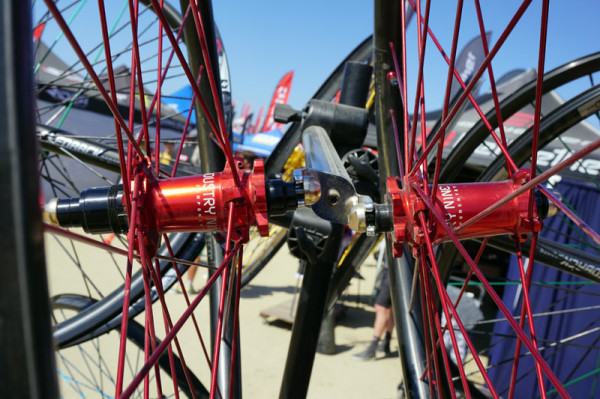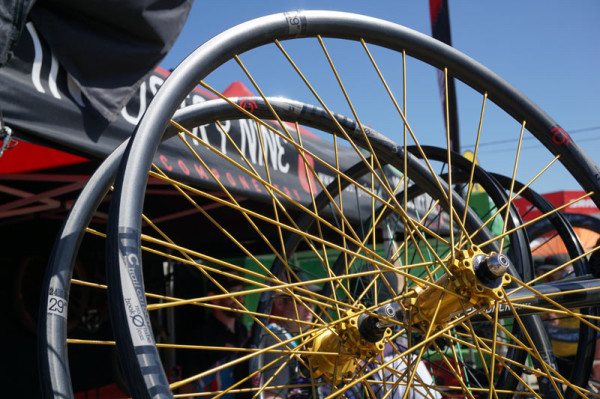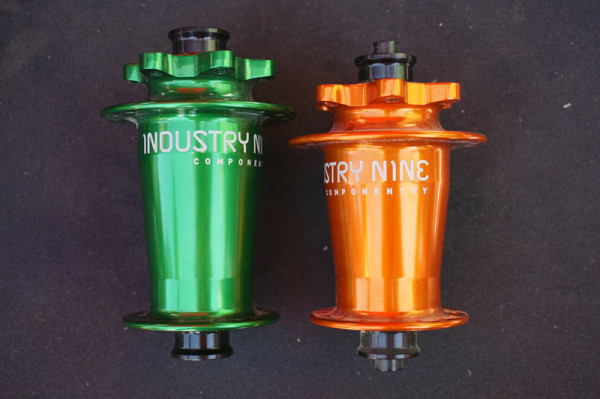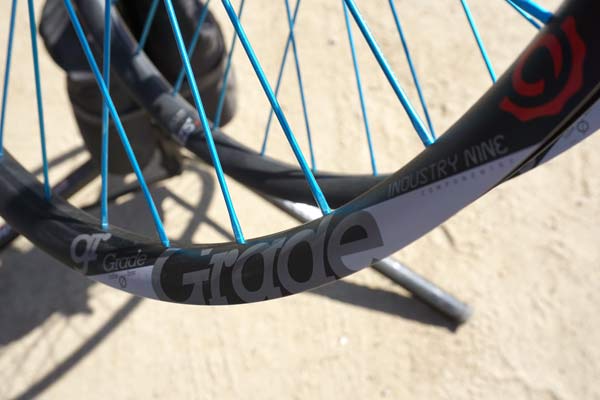Perhaps the first company outside of SRAM to have a production Boost 148 hub available when they introduced it at Eurobike 2014, Industry Nine has rounded out the collection with more spoke drillings, front 15×110 and the choice between their standard version and classic hubshells for use with regular spokes.
I9’s Jacob McGahey says it only adds 6g to the rear and 8g up front, but it yields a massive 30% stiffness increase to a front wheel and 15% in the rear. He added that you’d need 40+ spokes on a traditional wheel to get those same gains!
They’re now available in both 28 and 32 hole drillings. More pics and other news below…
Boost plus the higher spoke count option should make for an incredibly stiff wheel.
Boost 110 front compared to a standard 100mm front hub.
I9’s Gravity wheelset has been renamed Grade to avoid any trademark disputes with FSA’s brand.




